#comb jelly
Text
Blood-belly comb jelly my beloved ❤️ 🩸


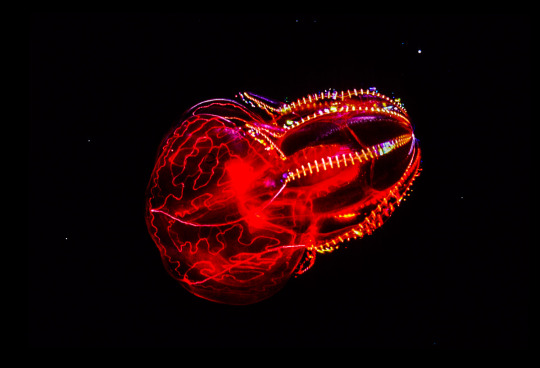

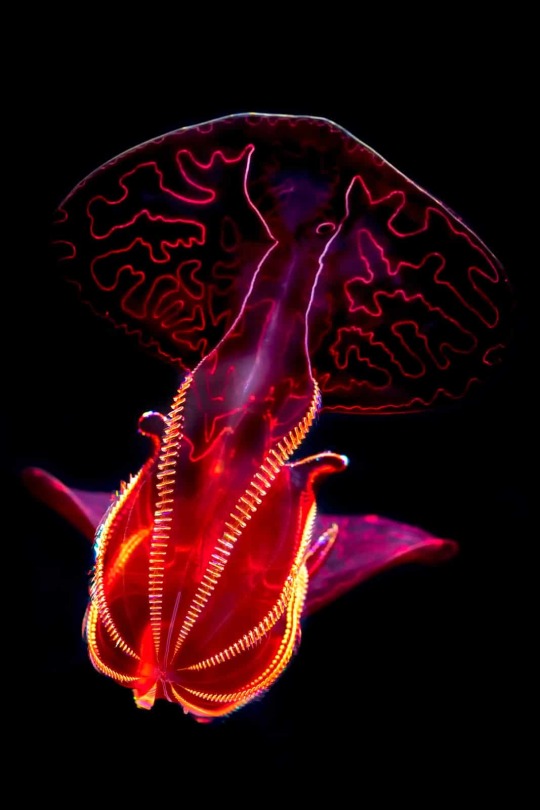
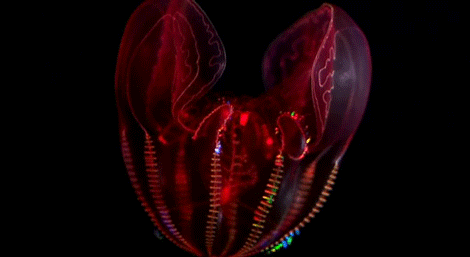
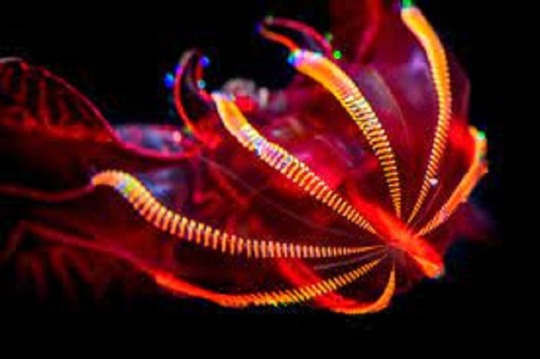
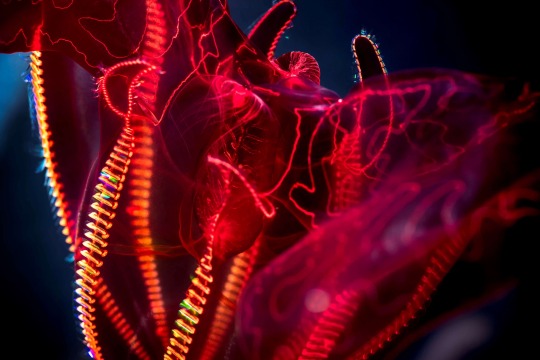
Meet Lampocteis cruentiventer, the bloodybelly comb jelly. This deep sea ctenophore was first collected in the Pacific Ocean off the coast of San Diego, California, in 1979.
Scientists believe the bloody-belly's red belly helps mask bioluminescent light from the prey it consumes. A predator with a glowing gut could easily become prey.
The genus name Lampocteis derives from the Greek roots for “brilliant comb,” referring to the bright iridescence diffracted from the animal’s comb rows.
Love to sea it 🌊
#marine life#marine science#marine biology#marine animals#ctenophores#comb jelly#love to sea it#ocean life#marine critters#marine creatures#fish#underwater#diving#ocean animals#fishposting#oceanposting#ocean#deep sea#sea creatures#sea critters#sea life#aquatic life#bioluminescence#biology#ocean creatures#ctenophora#science#fishblr#there are many advantages to being a marine biologist#creature feature
4K notes
·
View notes
Text


Two pieces of real world anatomy art I did for fun many years ago!
About as alien as you can get.
990 notes
·
View notes
Photo



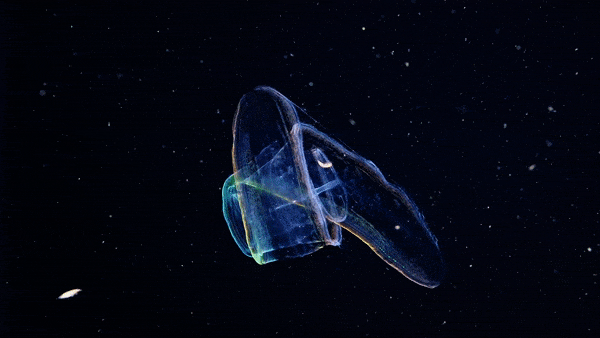


Venus girdle (Cestum veneris)
via Aquatilis
#nature#comb jelly#comb jellies#marine#ocean#sea#marine biology#bioluminescence#light#jellyfish#science#beauty#ctenophora
13K notes
·
View notes
Text


cestum veneris
8K notes
·
View notes
Text
Our love for the ocean runs deep. ❤️
Bloody-belly comb jellies are ctenophores. Like other comb jellies they navigate through the water by beating their shimmering hair like cilia. The sparkling display we see in this video clip comes from light diffracting from these tiny transparent cilia.
At the depths where this comb jelly lives it’s nearly invisible to predators and prey because the color red appears black and allows the animal to blend into the dark background. These twilight zone treasures are found in the North Pacific Ocean and measure about 6 inches across. You can see one for yourself on display @montereybayaquarium .
454 notes
·
View notes
Text

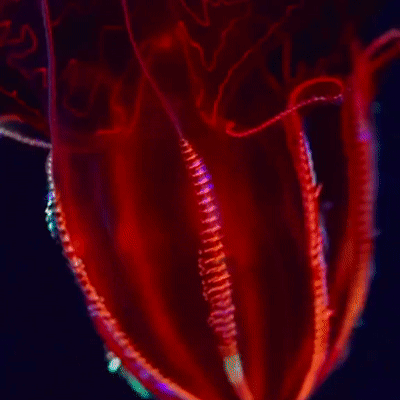
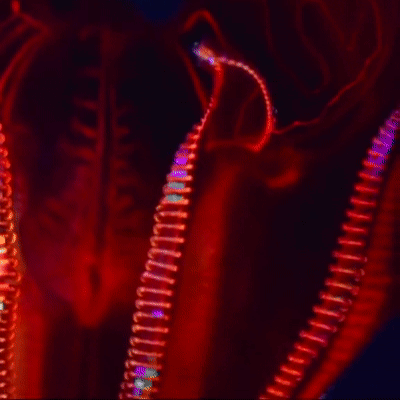

🦑 ~ Blood-belly Comb Jelly ~ 🦑 (thenaturalistsguide)
(Credit if you use) (ko-fi)
#glowing#bioluminescence#jellyfish#sea creatures#bioluminescent fish#bioluminecent#deep sea#thallasophobia#jellyfish stim#redcore#blood-belly comb jellyfish#comb jelly#comb jellyfish#sensory#Bioluminescent#glow#glowcore#glowwave#glow stim#glowing effect#glowy#glow aesthetic#neon red#neon#bioluminescent#jellies#marine life#marine biology#seas animals#sea life
861 notes
·
View notes
Text
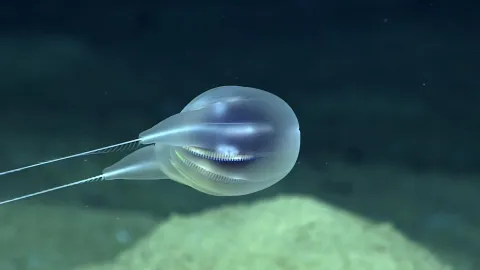
Deep Sea Comb Jelly (Duobrachium sparksae), Order Cydippida, encountered 3,910 m deep, about 40 km off the coast of Puerto Rico
Described/discovered in 2015.
photograph via: NOAA Office of Ocean Exploration and Research
See video here:
Combing the Deep: NOAA's Discovery of a New Ctenophore (youtube.com)
265 notes
·
View notes
Text
We were trying to take nice pictures of this sea gooseberry, but no, he insisted on breakdancing.
Over time the gooseberry eventually straightened out.

My stepbrother Nick likes doing handstands on vacation, I like taking pictures of comb jellies.
#ctenophore#comb jelly#gooseberry#marine lab#marine biology#sealife#ocean life#oceans#marine science#marine invertebrates#invertebrates#new jersey
4K notes
·
View notes
Text
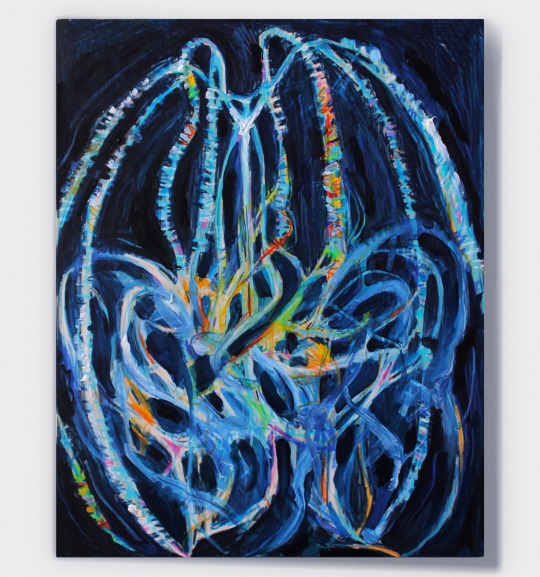

Sea Chalice, colored pencil, wax crayon and oil paint on wood panel
255 notes
·
View notes
Text





Swallowed Whole - a comb jelly preying on a comb jelly
441 notes
·
View notes
Text
Phylum #1: Ctenophora, the comb jellies!
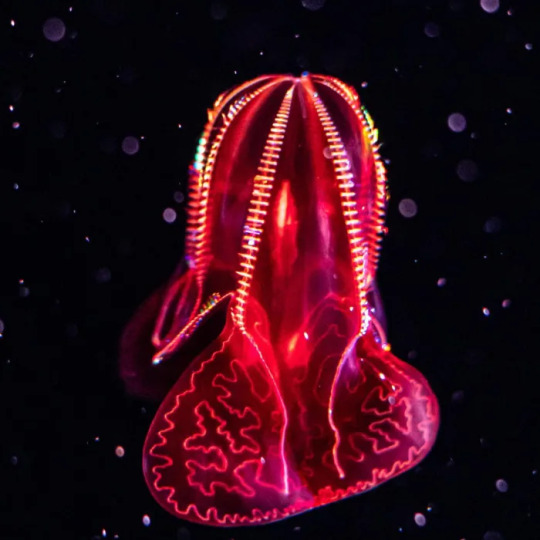


For quite a long time, it was believed that sponges were our most distant cousins, standing on the opposite side of the animal tree of life. Turns out it isn't the case - shiny, jelly-like creatures are the most alien of animals!
But these aren't true jellyfish, or anything close! Comb jellies don't sting, and don't have much in common with jellyfish except in appearance - in fact, they likely evolved most of their body plan completely independently!
They get their name from the rows of combs going down their body, with which they swim. These can often reflect light in unusual way, bringing a gamer vibe in the ocean depths!
Comb jellies come in a variety of shapes and sizes, not all jelly-like. Some scurry on the seafloor, while others look like huge floating ribbons. And some are even voracious predators, hunting... other comb jellies!
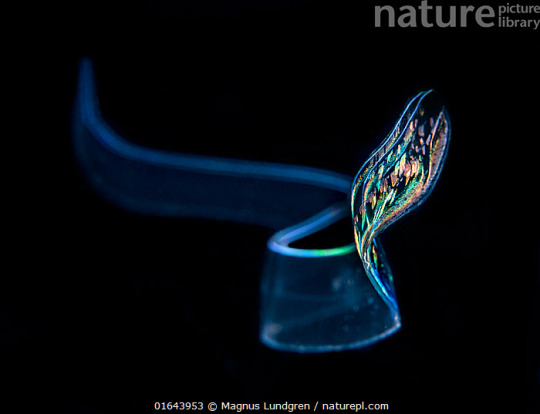

548 notes
·
View notes
Text
The blood-belly comb jelly absolutely blew my mind @montereybayaquarium
#you guys….. this aquarium was a big time bucket list thing for me#and I am so 😭💖🙏 about each and every step I took inside this incredible establishment#monterey bay aquarium#california#jelly luv#jellyfish#comb jelly#deep sea jelly#deep sea#mine#2023
284 notes
·
View notes
Text
No one expects the jamfish inquisition!
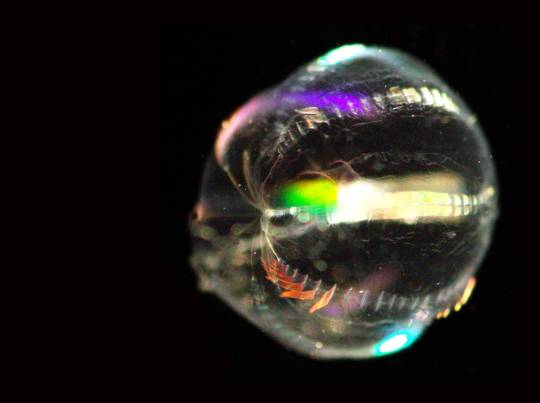
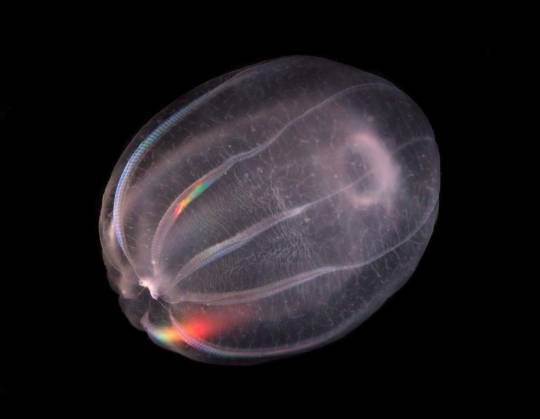


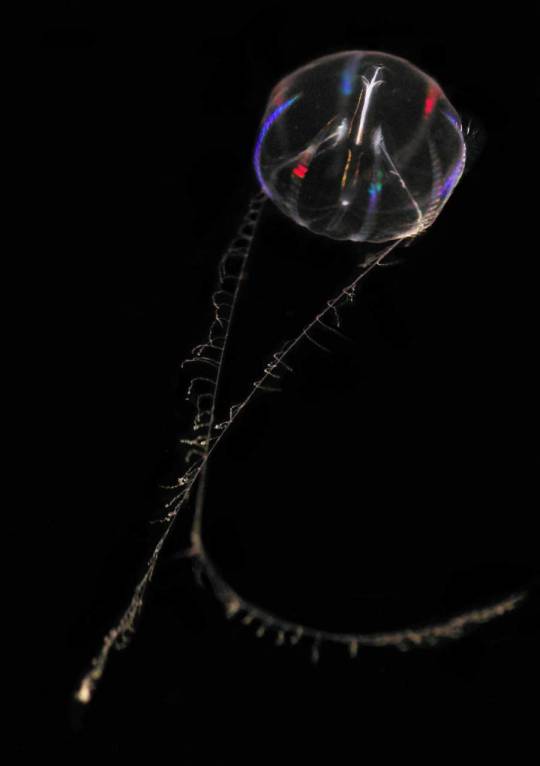
My name is Jamie, and my name is a pun about ctenophores, which are not jellyfish. The ctenophores pictured above are the likely sister taxa to all other animals, branching off the evolutionary tree before even sponges. They'd have independently developed nerves and muscle. The pinks ones here are sort of cannibals - they eat other ctenophores by swallowing them whole.
I'm taking a chance blazing this post because I want more people to know about and appreciate ctenophores, and because I'm also starting from scratch here after years away and am hoping to find community and an audience for my work.
I'm a disabled queer marine scientist currently looking for accessible work and selling my photography and embroidery to try and cover medical bills in the meantime. If you are a fellow creative and/or ocean enthusiast, I would love if you said hi. I so appreciate anyone checking out or sharing my work:
Art Prints: https://www.inprnt.com/gallery/noncompliantcyborg/
Embroidery: https://shop.noncompliantcyborg.com/
#ctenophore#ocean#marine biology#comb jelly#small business#art shop#new here#salish sea#my marine life photos#my photography
177 notes
·
View notes
Text
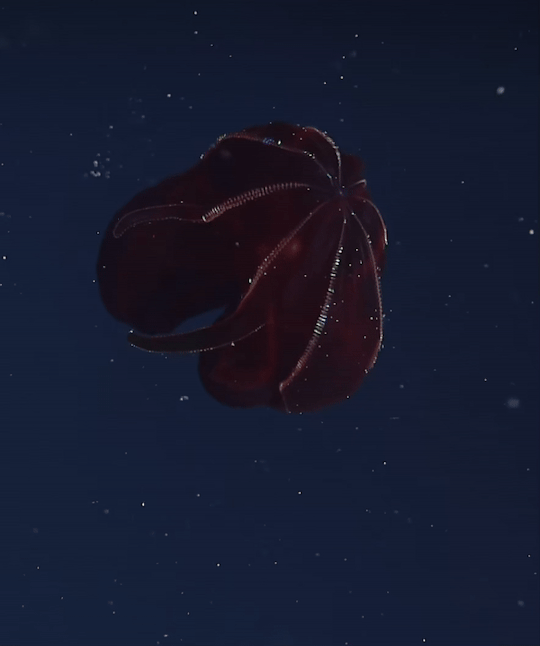
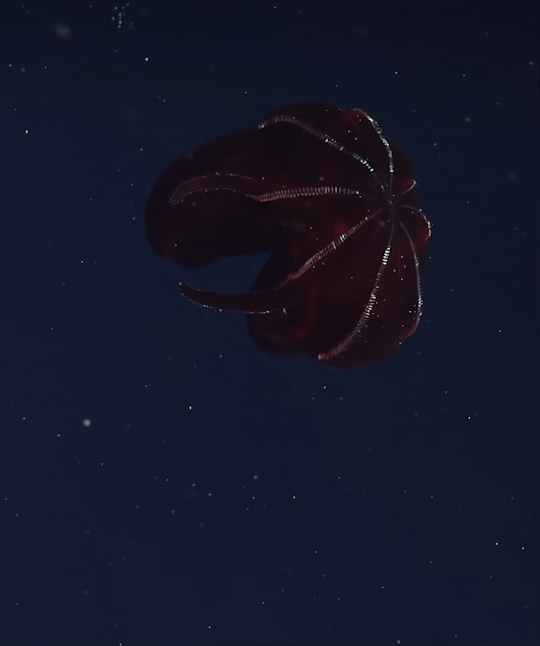
Lampocteis
Lampocteis is a monotypic genus of comb jellies, the only genus in family Lampoctenidae. The sole species in this new genus is Lampocteis cruentiventer, the bloodybelly comb jelly. This ctenophore was first collected in the Pacific Ocean off the coast of San Diego, California, in 1979. It was described in 2001. The generic name was formed from the Ancient Greek lampós ("bright, shining, brilliant") and kteís ("comb"), referring to the iridescence of its "combs"; the specific epithet was formed from the Latin cruentus ("blood-red") and venter ("belly"). Two morphological differences separating it from previously known comb jellies warranted the naming of a new family for this animal. These jellies are typically found at a depth of 250-1,500 meters deep in the North Pacific Ocean.
#science#sciencecore#ocean#deep sea#oceancore#watercore#aliencore#aquatic#aqua#aesthetic#naturecore#nature#mother earth#earthcore#bloodybelly comb jellies#jellyfish#jelly#comb jelly
91 notes
·
View notes
Text

Comb jelly
By: Douglas Faulkner
From: The Fascinating Secrets of Oceans & Islands
1972
67 notes
·
View notes
Text
Ctenophore rainbow ❤️🧡💛💚💙💜
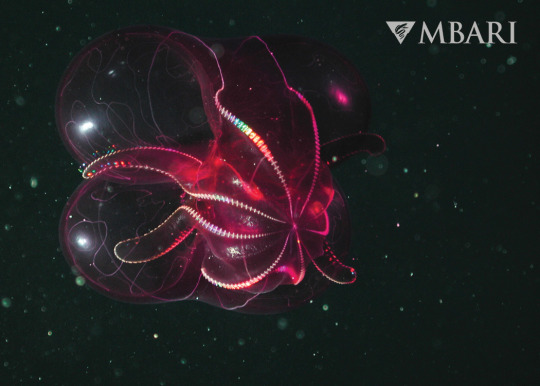
Lampocteis cruentiventer
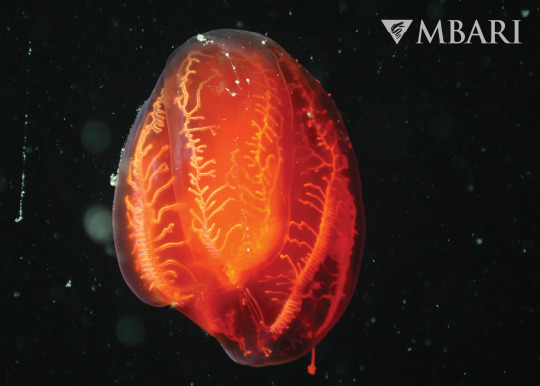
Aulacoctena sp.
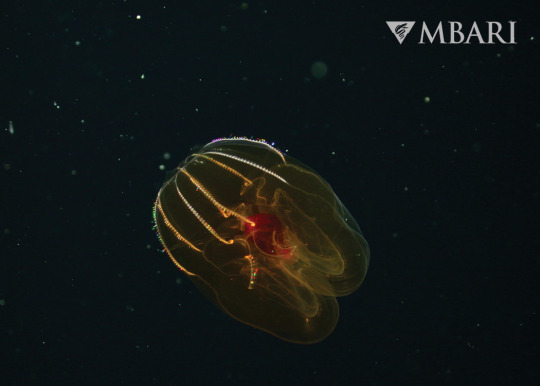
Lobata sp.
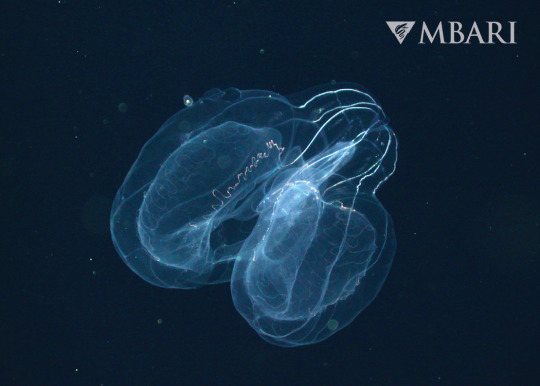
Llyria sp.
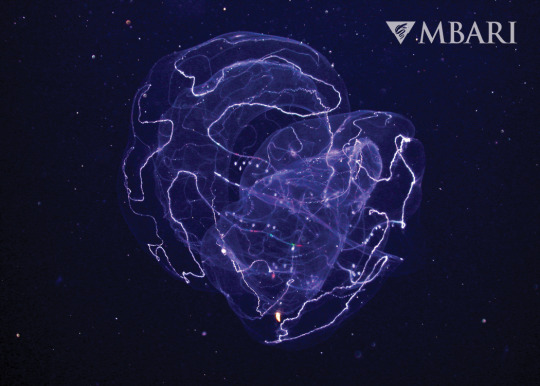
Thalassocalyce inconstans
Ctenophores are mysterious ocean drifters. They are extremely diverse, living from the equator to the poles and from the ocean surface to more than 7,000 meters, or more than four miles, down. Colorful, translucent, and delicate, these predators glide through ocean waters capturing other animals, typically using their long, sticky tentacles.
Scientists have described more than 200 ctenophore species. They come in an assortment of shapes, sizes, colors, and patterns. Some are small, while others can be quite large—growing larger than a football. All play an integral role in ocean ecosystems.
499 notes
·
View notes